Ahh, Wi-Fi! It’s nice to be back!
When we woke up we were docked in the southern Greece port of Laurium which is south of Athens. We met our new guide, Mariza, and dropped our cruise guide, Kari, at the Athens airport. We boarded a bus and headed for ancient Corinth, which was about 90 minutes away. Along the way, we stopped at the Corinthian Canal, that joins the Aegean Sea with the Ionian Sea across the Corinthian Isthmus.
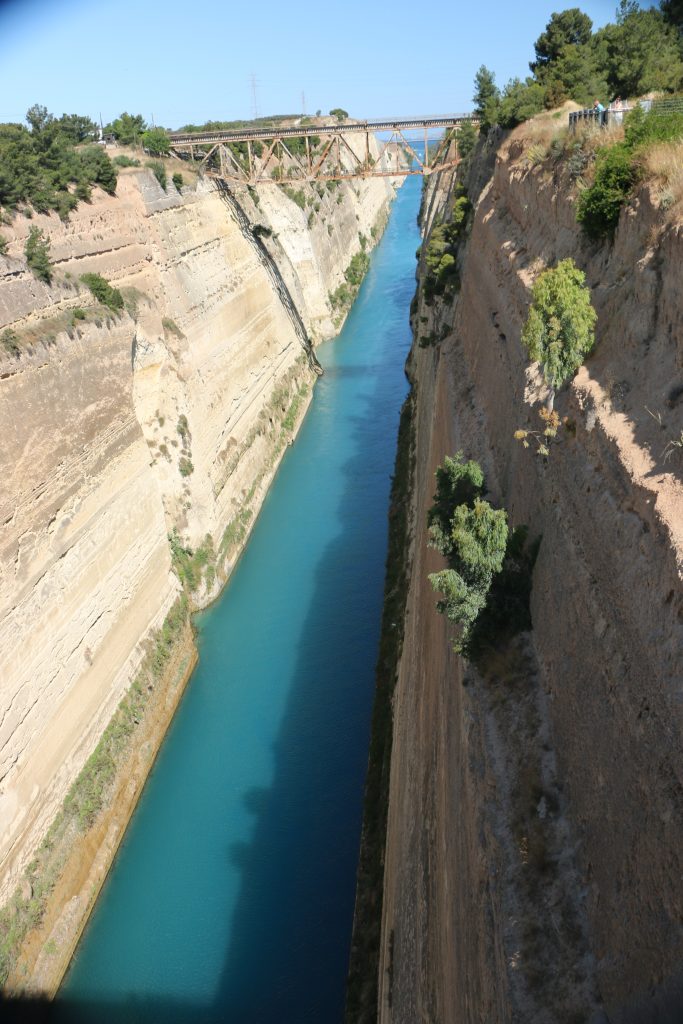
In ancient times, there was no canal, but a trail that allowed merchants to bring their wares from one side of the isthmus to the other.
We arrived at the site of Ancient Corinth, and as with some of the sites in Turkey, the size of it, and the volume of what has been found, is amazing. Included in the site is an ancient temple of Apollo, and the Bema (or judgement) seat, where people would be judged for their crimes.
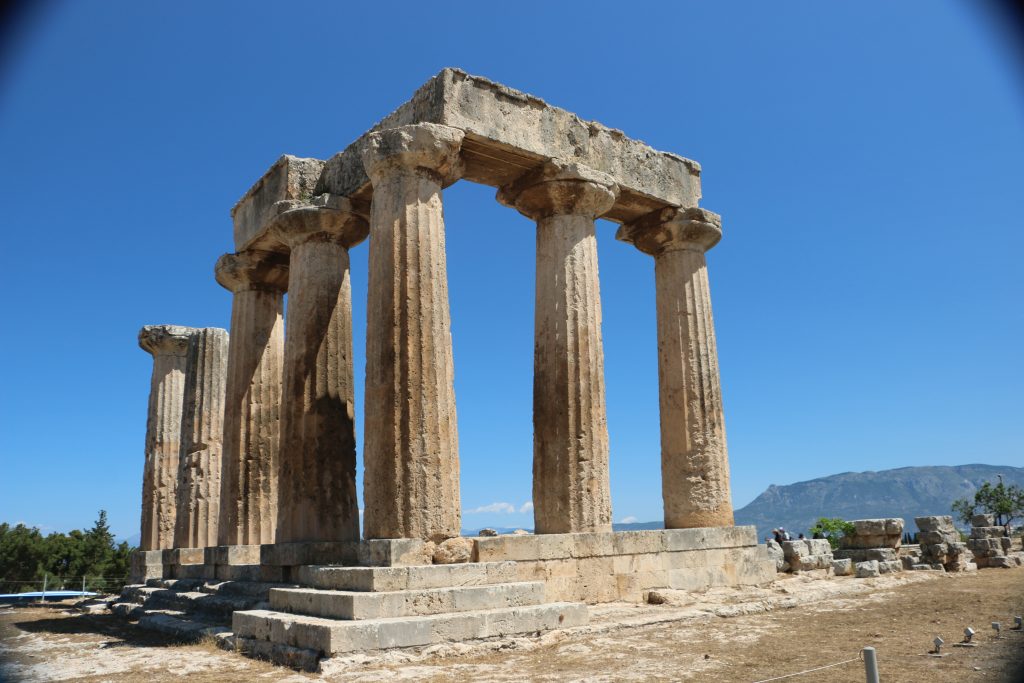
We found a shady spot and then I delivered my first devotional message of the trip based on 2 Corinthians 4:7-10.
“7 But we have this treasure in earthen containers, so that the extraordinary greatness of the power will be of God and not from ourselves; 8 we are afflicted in every way, but not crushed; perplexed, but not despairing;9 persecuted, but not abandoned; struck down, but not destroyed; 10 always carrying around in the body the dying of Jesus, so that the life of Jesus may also be revealed in our body.”
Several people after thanked me for the message, including two of the pastors who were leading the trip.
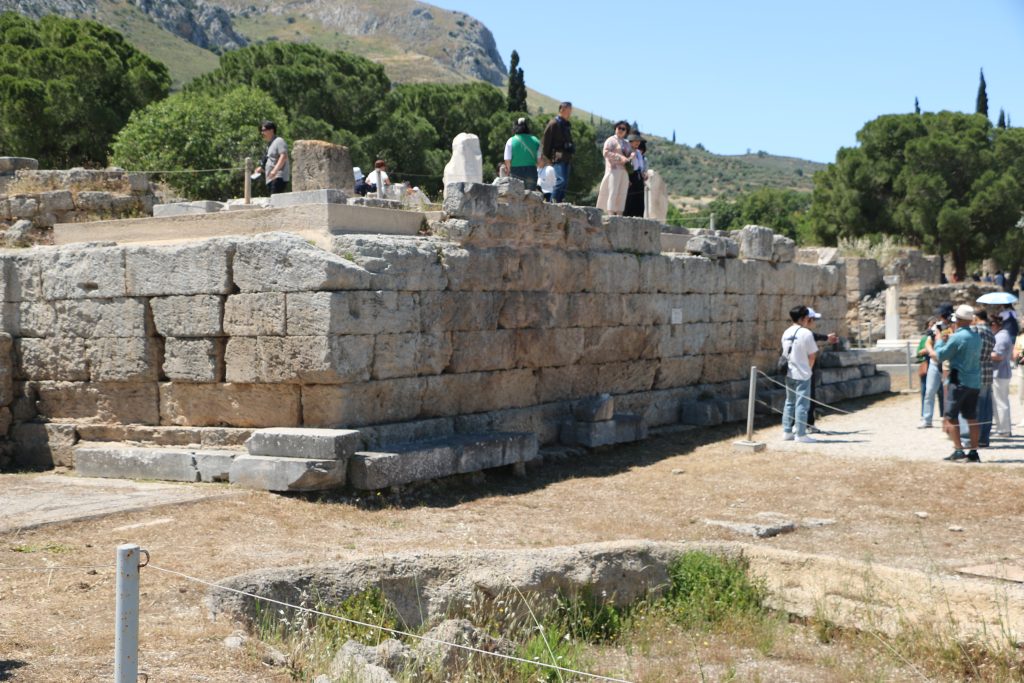
Above: The raised platform where the Bema (or judgement) seat was.
Below: What remains of the Bema seat.
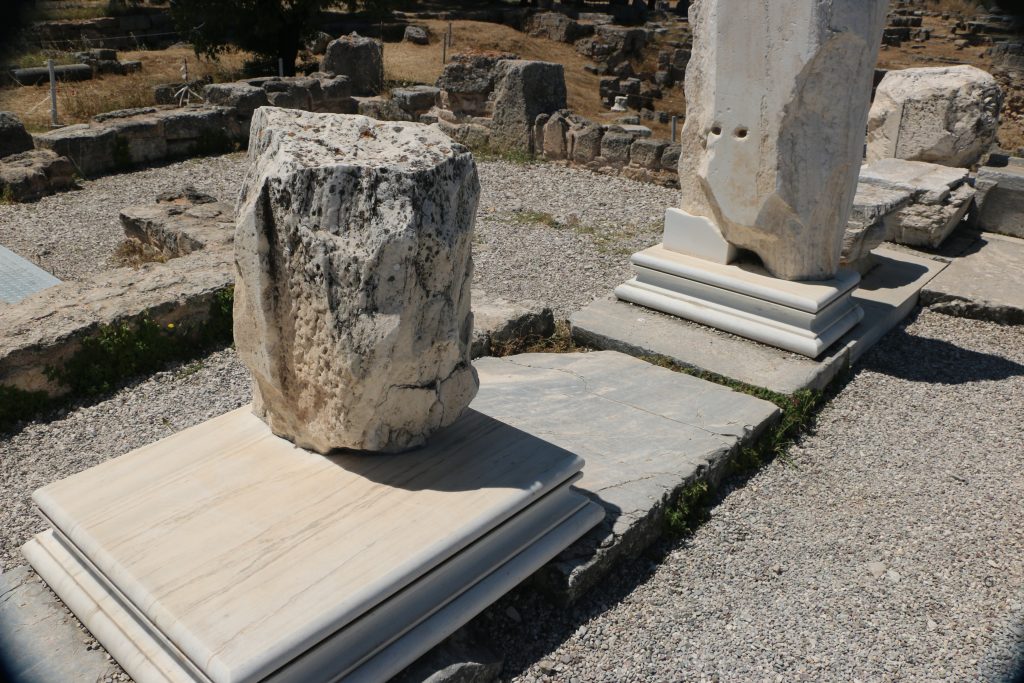
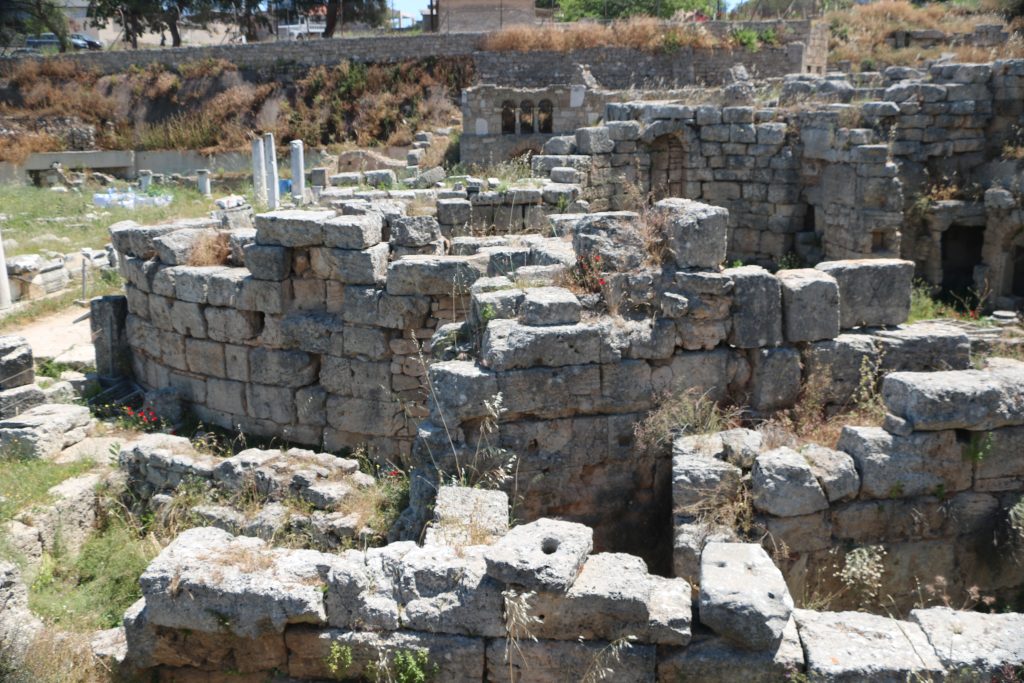
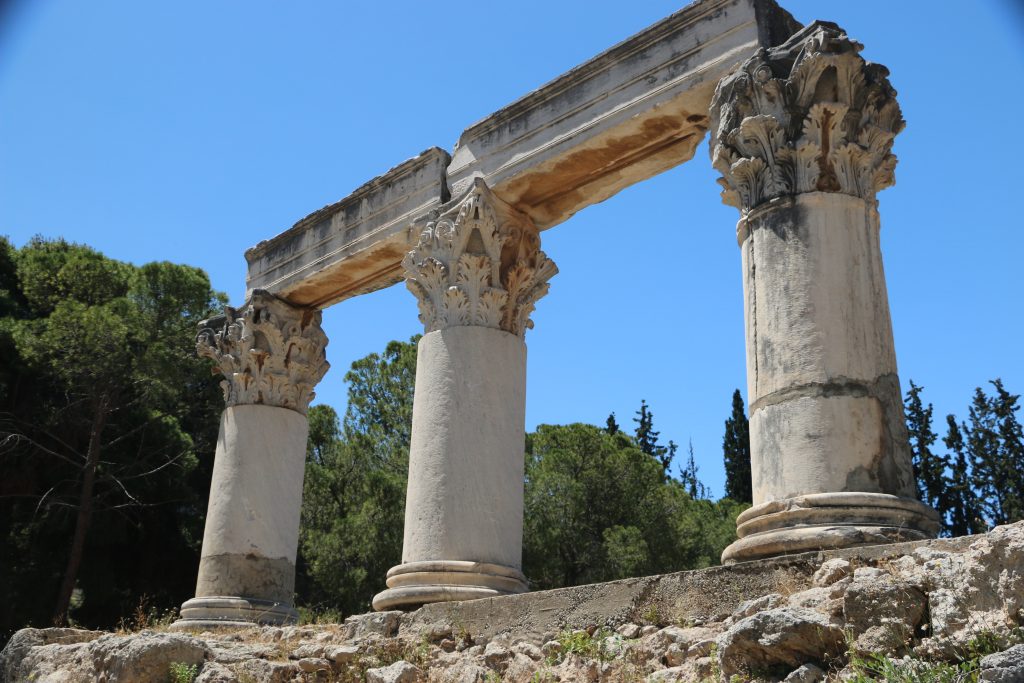
From this site we could see the Corinthian Acropolis, the mountain fortress that housed more than 20 temples to the Greek gods and goddesses.
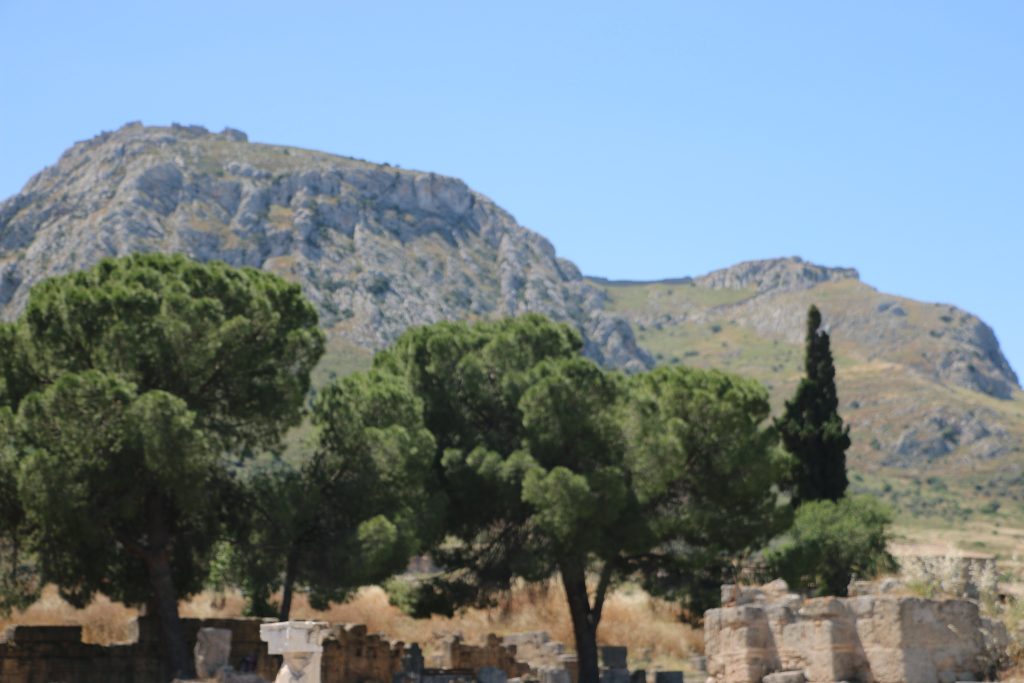
When the time came to go, we boarded the bus and headed to Mycenae for lunch. We ate at a very nice restaurant, Kolizeras, seemingly in the middle of nowhere. I had postitios, a Greek dish with potato, meat, pasta and sauce.
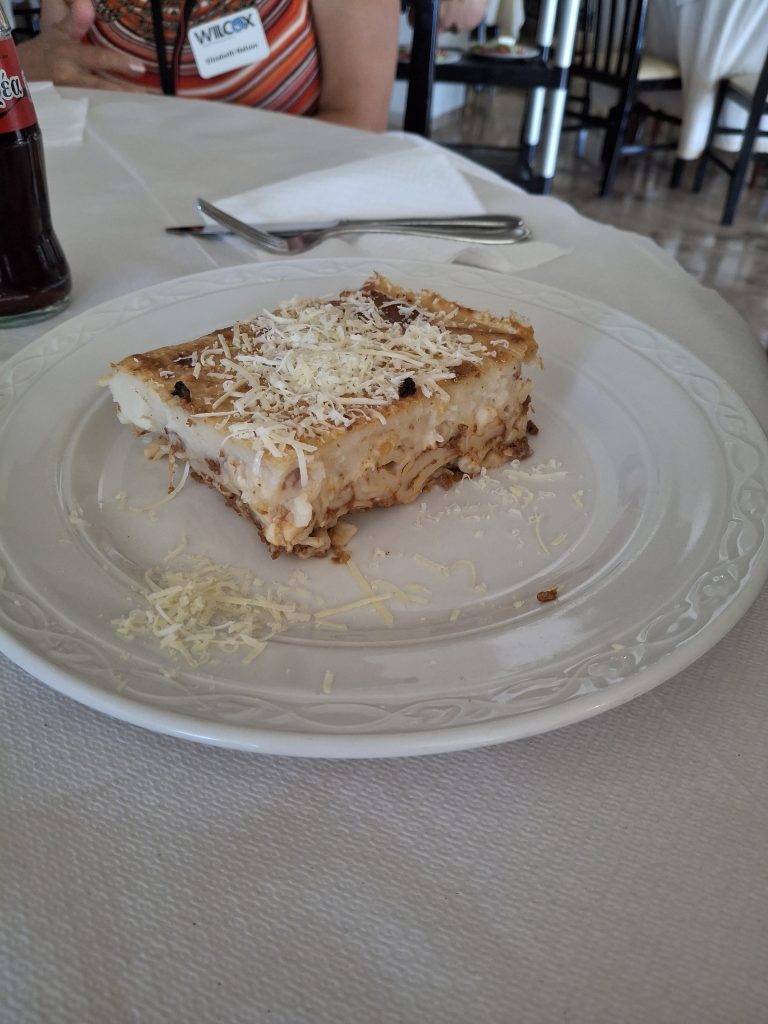
We also ordered Coke Zero and couldn’t get a firm answer on what the Greek word on it was. Was it a name, or something like “friend”?
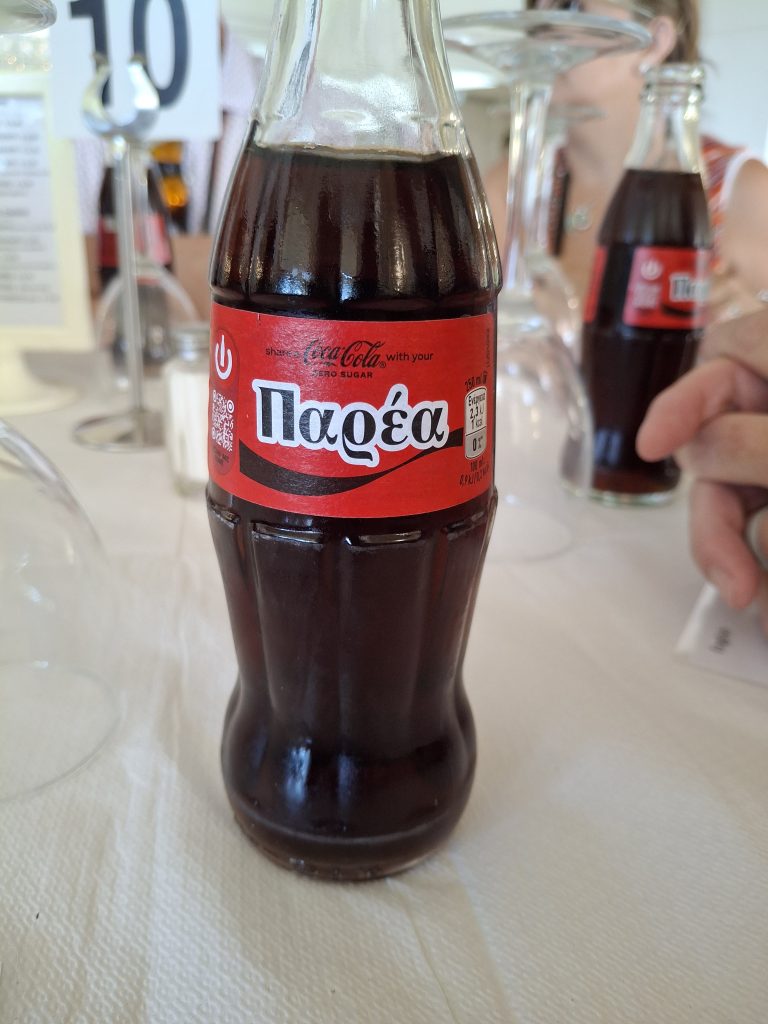
After lunch we went to Agamemnon’s Palace. In The Iliad, Agamemnon was a king of Mycenae who commanded the Achaeans (Greeks) during the Trojan War. Archaeologists believe there was a Trojan War, and many of the characters in Homer’s epic were real, but exaggerated in Homer’s tale.
Agamemnon’s Royal Palace
Tucked away in the mountains of Mycenae is Agamemnon’s Royal Palace, one of several heavily fortified strongholds. The king lived in a palace with many rooms which served as a military headquarters and a centre of administration for the surrounding countryside. The Mycenaean’s were warriors, and weapons and armor have been found in their graves. They were also great traders and sailed far and wide. Their civilization reached the height of its power in about 1600 BC and eclipsed the Minoan civilization of Crete. Around 1300 BC the Mycenaean’s started to build huge defensive walls around all the major towns. The Mycenaean world was under threat from foreign invaders. By about 1200 BC the cities began to be abandoned or destroyed.
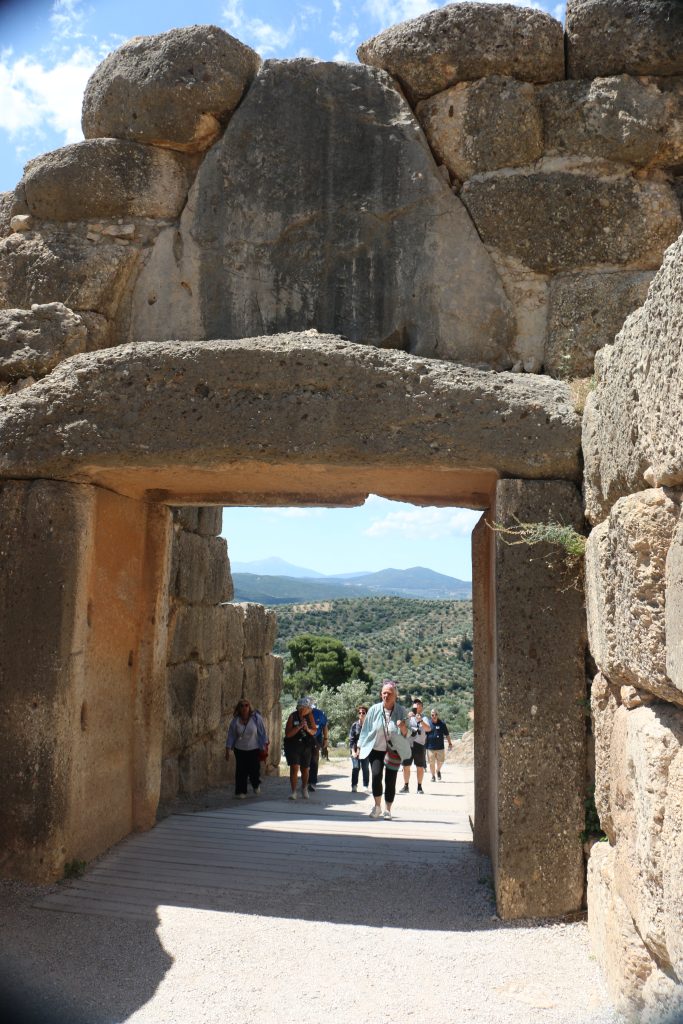
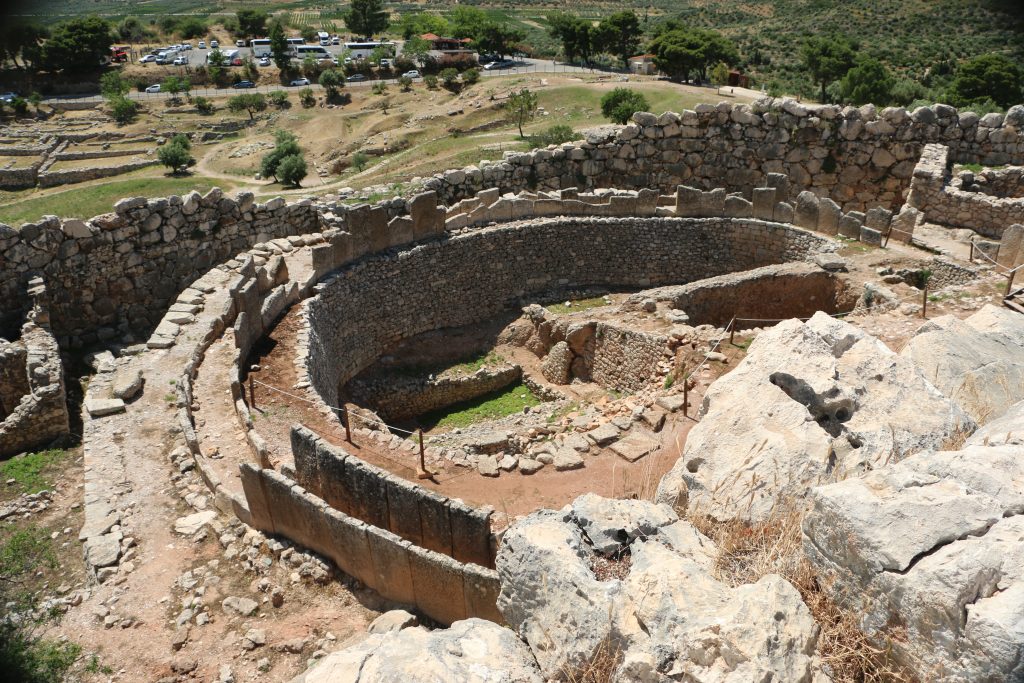
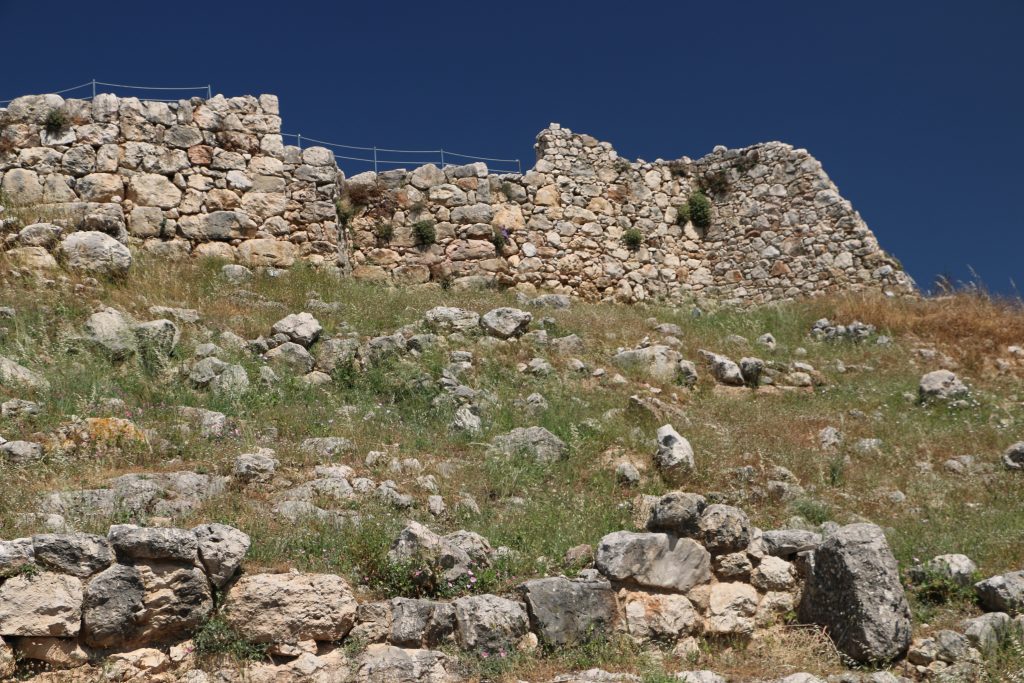
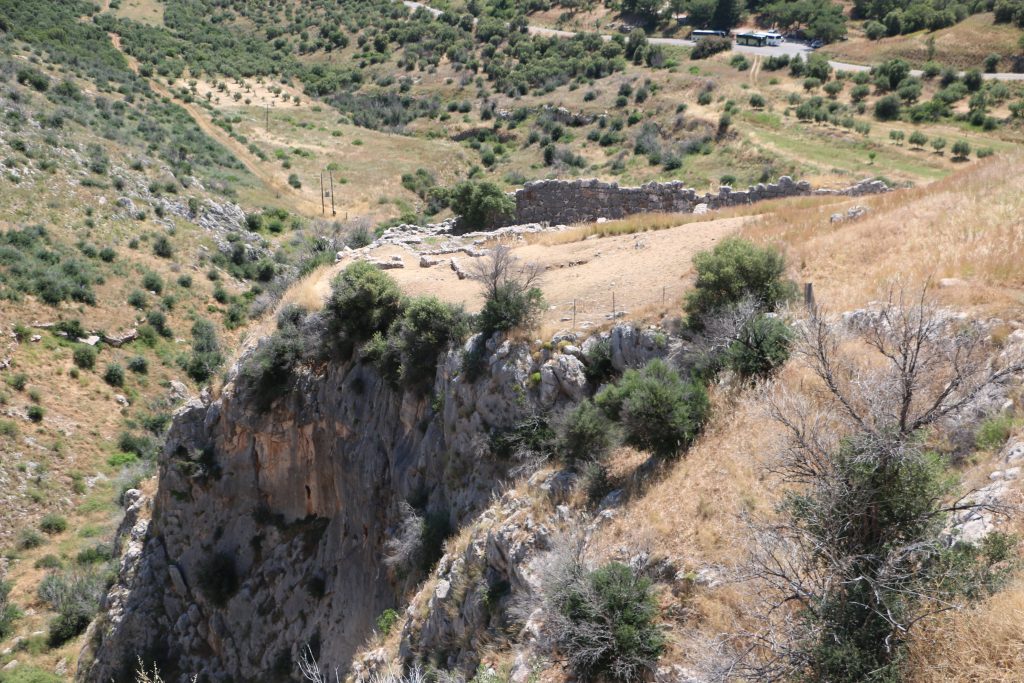
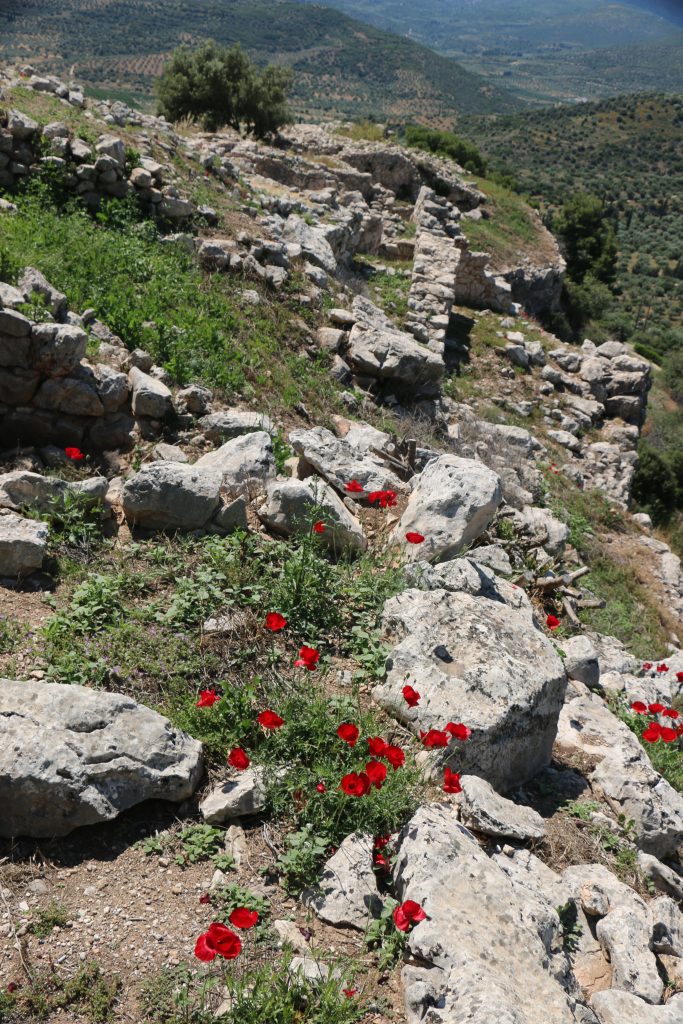
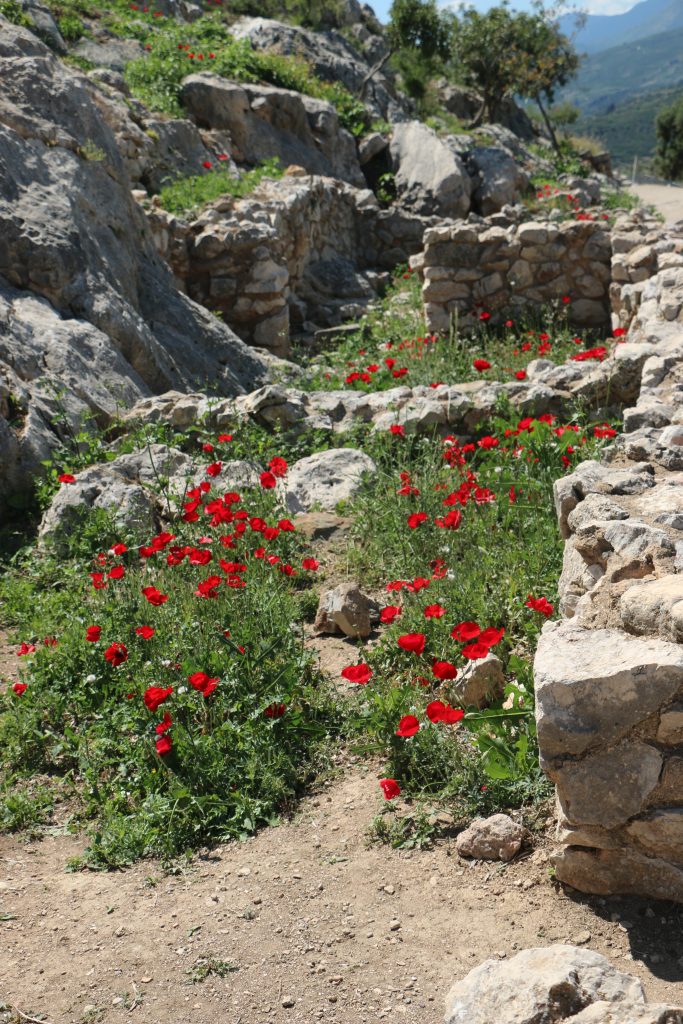
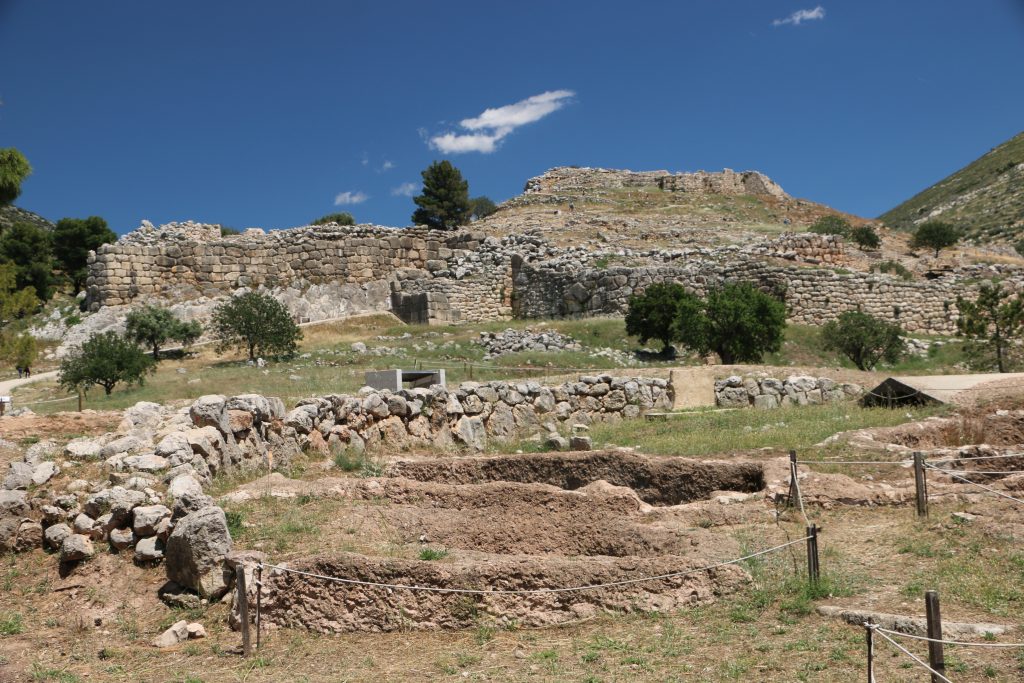
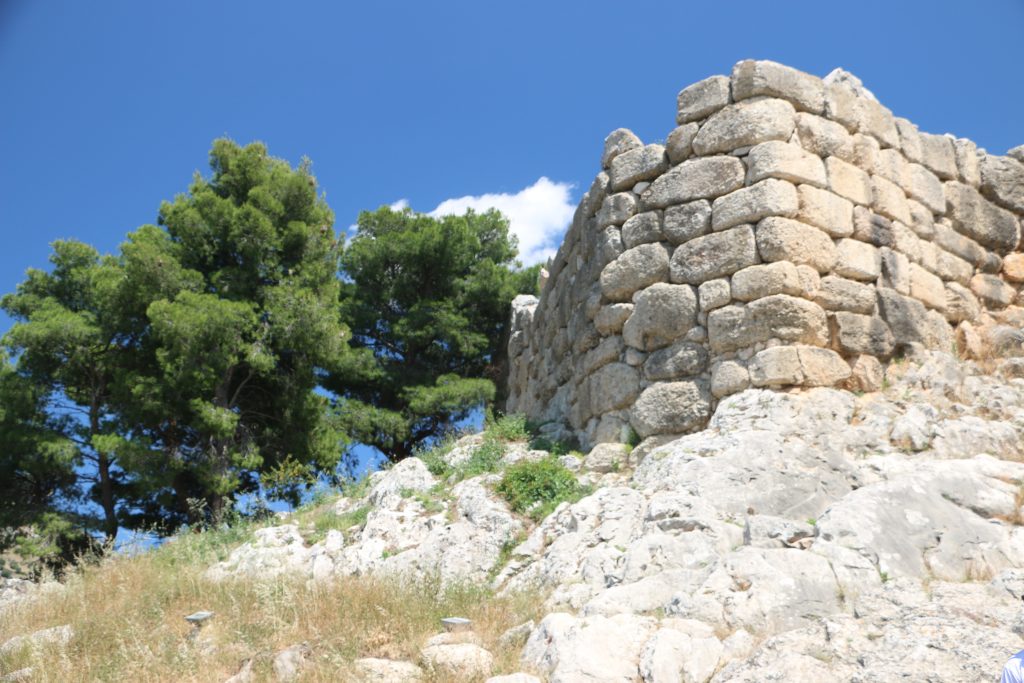
The red flowers on the ruins are poppies.
After we left the palace we went to see Agamemnon’s Tomb. The door to this tholos tomb (beehive tomb) measures over 5m tall, the lintel above the door, which weigh over 100tons each! No one is certain that Agamemnon’s was buried here, but it certainly is a tomb for a king. Oddly enough, after it was discovered, shepherds would take their flocks inside for shelter and light fires that darkened the walls. There is a stray dog named Hercules that guards the tomb from other dogs. There’s another dog at the palace named Hermes who does the same thing.
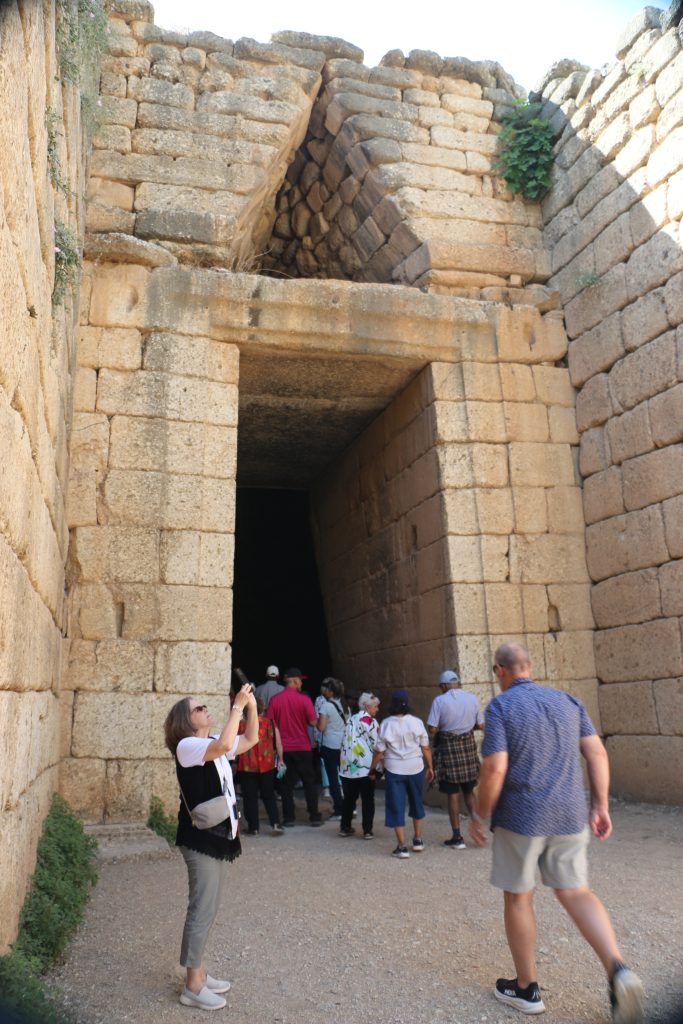
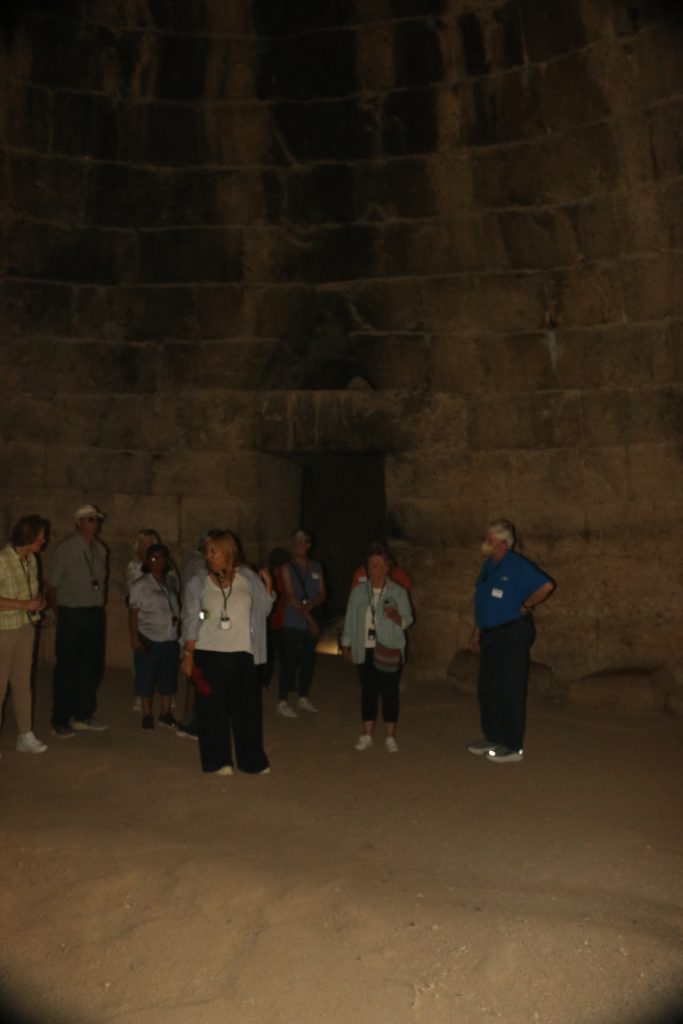
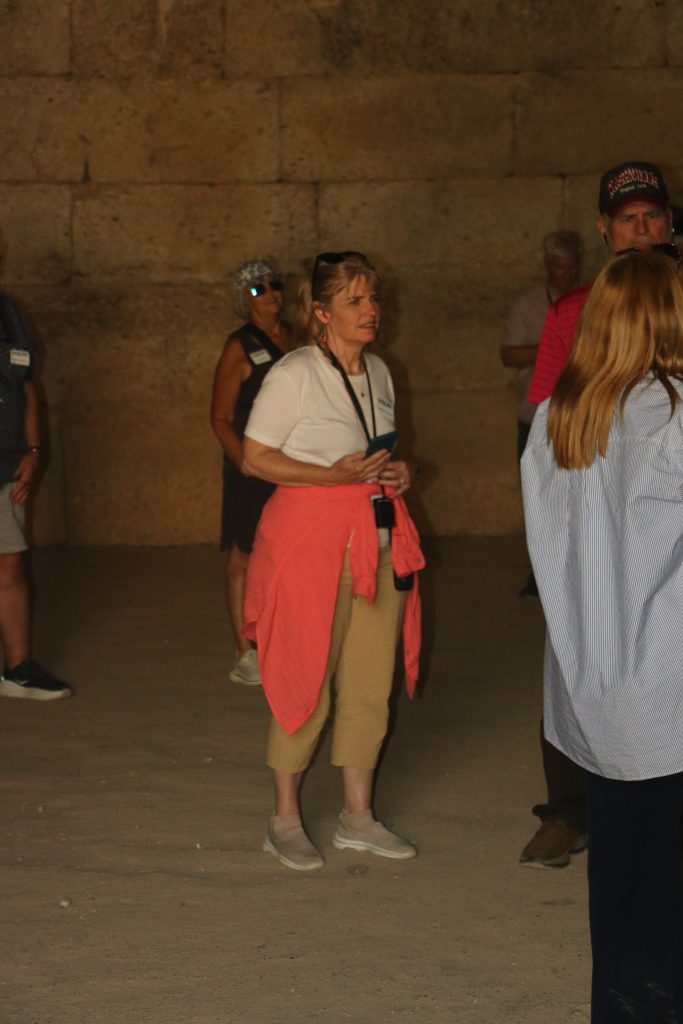
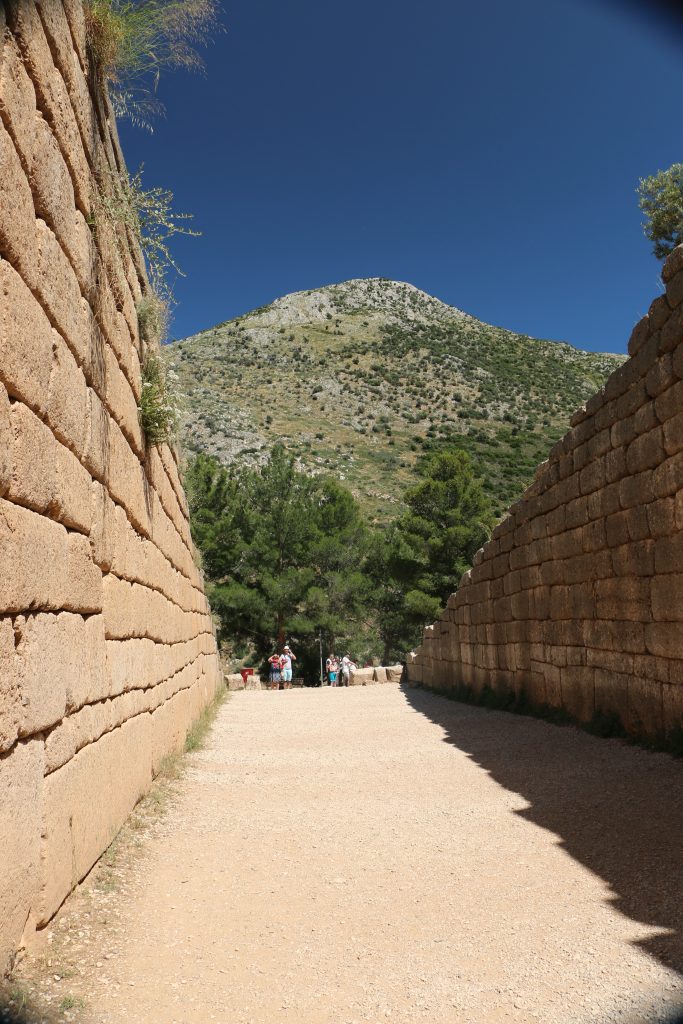
After Agamemnon’s Tomb, our guide took us to a beach on the Aegean where some ruins were discovered recently. These ruins are believed to be the seaport that Paul left for Syria with Priscilla and Aquila through, as described in Acts 18:18.
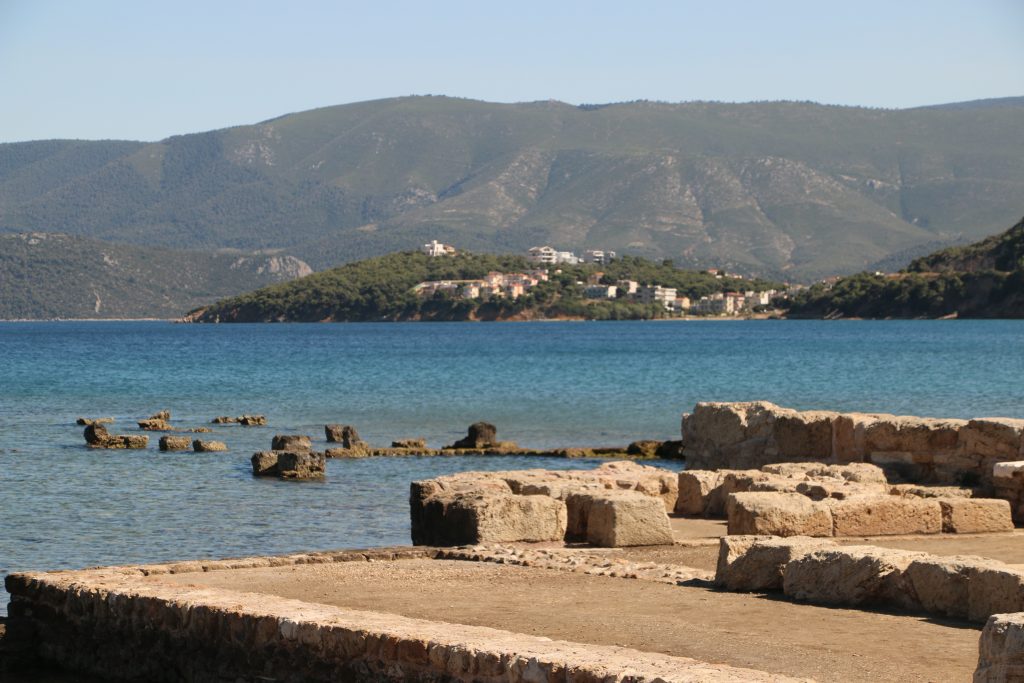
After this we drove back to Athens for dinner and much-needed rest! Tomorrow, the Athenian Acropolis!
Please leave comments and questions!
